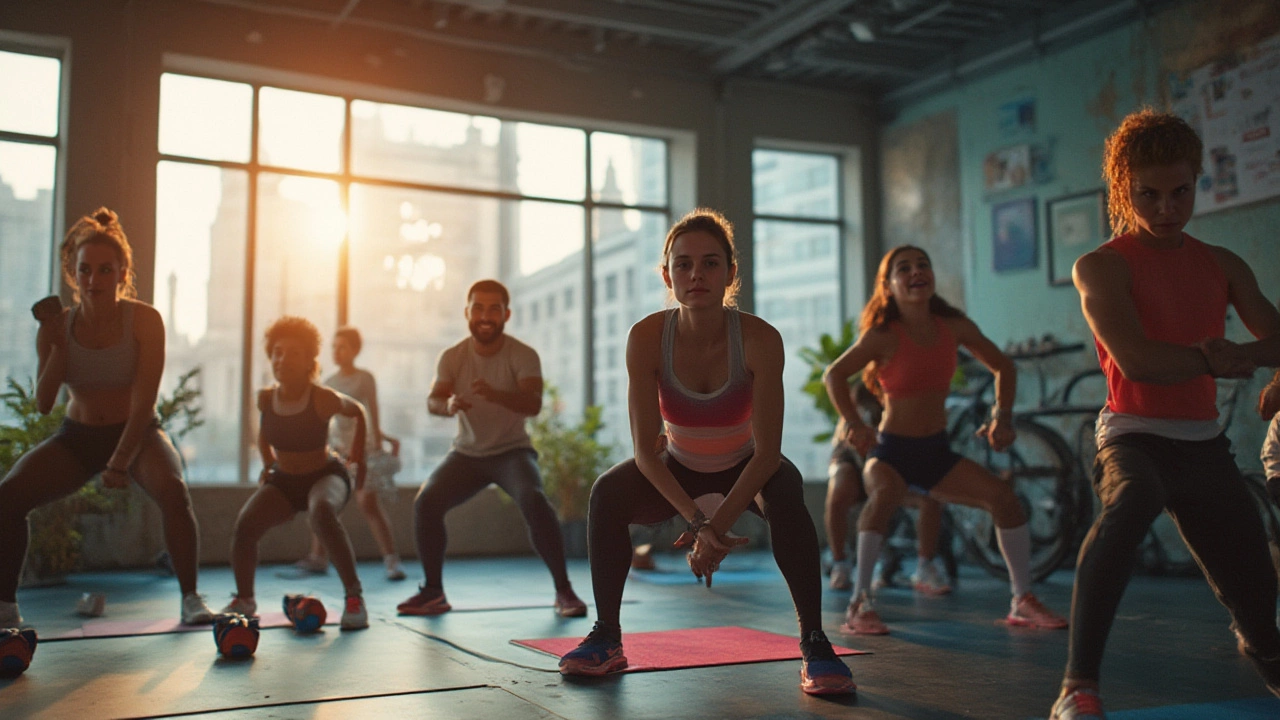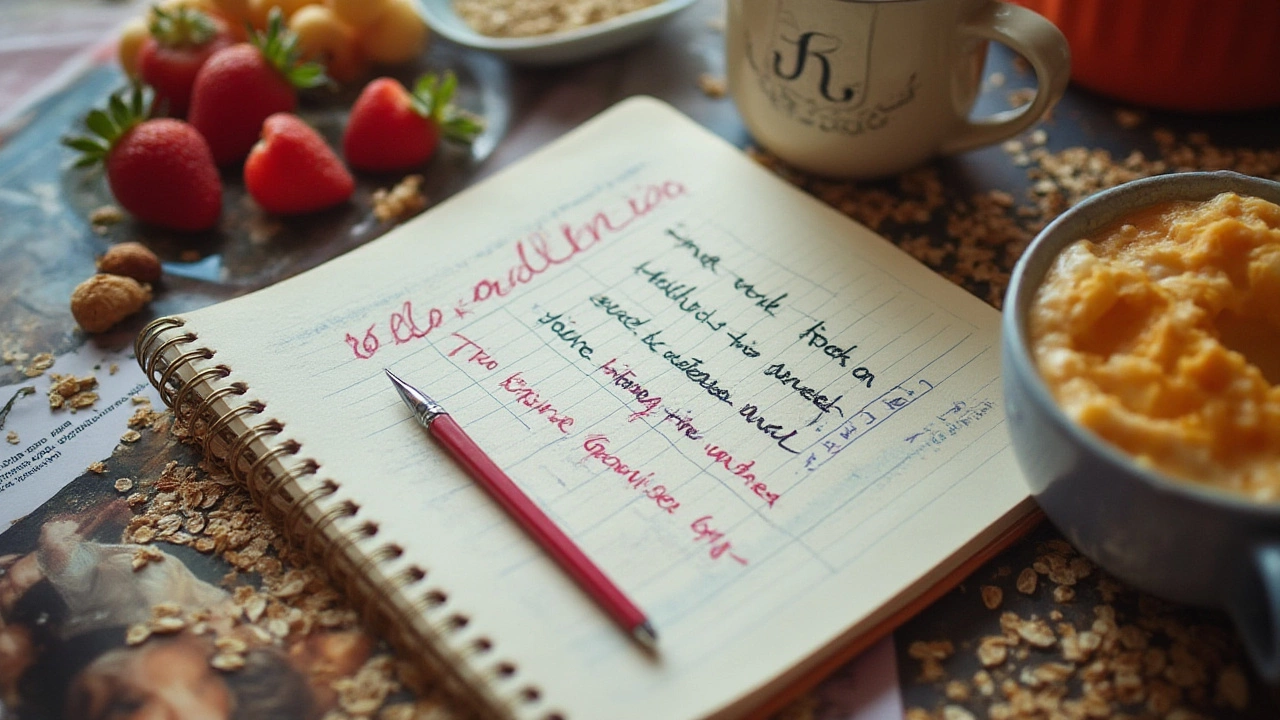
Trying on shorts in a cramped fitting room, I caught myself wondering if those late-night cookies were worth it. Looking down at my not-so-toned legs, part of me wanted to believe every Instagram promise: “Get toned in just 14 days!” Is it really possible to see your muscles pop, drop a size, or sculpt that dream physique in only two weeks?
That’s the kind of promise even the big names at the gym roll their eyes at. Still, we've all typed it into Google at least once: can I actually tone up in two weeks? Here’s what you can—and can’t—pull off in that crazy-short stretch.
First off, let's get honest: “toning up” gets tossed around a lot, but what does it even mean? In fitness lingo, toning is really just a mix of building muscle definition while reducing body fat so you can see those muscles. You won’t be putting on tons of muscle mass in two weeks, since muscle building (also called hypertrophy) is a slow process, and even professional athletes need weeks or months to see big changes. That said, you can absolutely reduce some bloat, see better definition, and even feel a little tighter—all in just fourteen days.
Good news? Much of that early "toned" feeling comes from reduced water retention and a slight drop in body fat, not huge muscle growth. Your muscles actually plump up a bit after a tough workout (this is called the 'pump'), so you might look a bit firmer right away. But keep your expectations realistic. Your actual muscle size won’t dramatically change, but your confidence and energy surely will.
Research published in the Journal of Strength and Conditioning Research notes that even after just 2 weeks of consistent, moderate-intensity exercise, most people notice some difference in how tight their arms, stomach, or legs feel—even if the tape measure barely budges.
tone up in 2 weeks is a tempting Google search because of all the 'before and afters' we see online. But let’s be real: most of those jaw-dropping changes were probably made in more than two weeks—or required intense calorie cuts, which almost always backfire. Keep your head in the game by focusing on visible, realistic changes: better posture, less bloating, higher energy, and noticing a few lines in your abs or shoulders that were hiding before.
So, what exactly changes? Water weight can drop fast, which will let definition show up more. Improved muscle activation—basically teaching your body to "turn on" all your muscle fibers during exercise—can also make you look more toned. Stick to compound movements like squats, lunges, and push-ups to get everything firing at once.
Ready for some concrete tips? You’ll want protein at every meal, not to starve yourself. Aim for lean options like chicken, eggs, yogurt, beans, or tofu, to help those muscles recover and rebuild (even if you’re a vegetarian—my daughter Elowen loves crispy tofu for dinner). Why is protein so key? Study after study says it preserves muscle, helps with fat loss, and makes you feel full longer.
Combine protein with water—at least 2 liters per day. Hydration isn’t glamorous, but it helps shrink belly bloat, cuts cravings, and flushes out salt. Eating more veggies automatically means more fiber, fewer calories, and less room for those "oops, I ate the kids’ snack bars again" moments. You can sauté, grill, or air-fry them. Just don’t drown them in creamy dressings if you actually want results.
So, if two weeks is all you’ve got before vacation, a wedding, or just needing to zip up those jeans—what does a smart action plan look like?
One more thing: measure progress with something other than the scale. Your weight can bounce up and down, especially if you’re building muscle (which weighs more than fat). Instead, snap a quick before photo on Day 1, then again at Day 14—side-by-side comparison is way more motivating than the scale ever was.
Remember, most people notice their arms, legs, and midsection looking less puffy and more streamlined even before the scale budges. That’s because you’re losing water, not fat. True fat loss takes time, but visible improvement in two weeks is 100% possible.
Here’s a sample schedule for those two weeks to help you get started:
| Day | Workout | Notes |
|---|---|---|
| Monday | Full body strength training (40 min) | Add cardio finisher (10 min of jumping jacks/sprints) |
| Tuesday | 20 min HIIT session | Focus on moves like squats, jumps, push-ups |
| Wednesday | Active recovery (walk, stretch, yoga) | Hydrate, eat lots of veggies |
| Thursday | Full body strength again | Increase weight or reps for challenge |
| Friday | Cardio intervals (30 min walk/jog) | Alternate speeds every 2 min |
| Saturday | Strength circuit (mix upper and lower body) | Try planks, lunges, rows, glute bridges |
| Sunday | Rest or light stretching | No guilt! Muscles rebuild today |
Repeat this pattern for week two. Mix up exercises to stay motivated, and listen to your body if you need an extra rest day.

If your kitchen is more "kid snacks and chaos" than nutrition haven, you’ll need a manageable eating plan. Toning up in a rush is possible with smart meal prep and realistic swaps. Strict diets are not the answer—they make you cranky and slow your metabolism. You don’t need to cut out every treat, but you do have to make most meals count.
The secret is balancing protein, carbs, and fat at every meal while keeping food tasty. Here’s what a typical day can look like:
Drink water all day, limit juice and soda, and try to keep alcohol in check (those summer spritzers add up fast!). High-salt snack foods? They’re the enemy if you want your stomach looking flat.
For a proactive jumpstart, consider meal prepping on Sunday night. Chop veggies, cook grains, and grill up proteins. Store in see-through containers so you know exactly what’s ready to grab. If you’re packing lunches for your kids, double up and make extras for yourself. Elowen loves packing rainbow veggie wraps—bonus: they’re fast and require zero fancy prep.
If you get stuck snacking after dinner, try brushing your teeth early or have a cup of herbal tea. Sometimes water works when you crave something "extra" late at night.
Supplements aren’t magic, but a high-quality whey or plant protein powder can fill protein gaps if you’re on the go. B vitamins and magnesium help fight fatigue, especially if your energy dips as you pick up the intensity in your workouts.
Not sure how much to eat? Try this golden rule: fill half your plate with veggies, a quarter with lean protein, and the rest with complex carbs or healthy fats like avocado or nuts. If you’re exercising hard, your appetite will naturally rise. Listen to your hunger, don’t become obsessed with calorie-counting—your body needs fuel to recover and look its best.
This is where the magic sneaks in. The difference between “I look the same as always” and “Whoa, I feel good in these jeans!” is usually in the details. Small daily choices add up—sometimes faster than we expect. Here’s what worked best for me and my (impatient) mom friends:
Some side effects you might notice right away? Better sleep, slightly clearer skin, and even stronger mood. There’s a pile of science showing that regular exercise—even just two weeks—helps reduce anxiety, improve memory, and even boost productivity.
Momentum really is everything. If you start strong and keep your habits tight for two weeks, there’s a high chance you’ll want to keep going. Those first visible changes prove to your brain that effort is worth it, which makes sticking with a routine way less of a drag.
If you hit a wall, don’t panic. Plateaus are normal, especially if you don’t switch up your workouts or keep eating the same thing daily. Mix things up: try a new recipe, add a dance workout, or challenge your partner to a plank-off in the living room. Nobody wants fitness to feel like a chore.
The truth? Two weeks is just enough time to surprise yourself. You won’t change your DNA or magically drop 10 pounds, but you’ll feel tighter, lighter, and probably a whole lot prouder of your choices. That little confidence boost has a way of spilling over into every part of your life—and yes, you’ll even enjoy those next rounds of shorts shopping. If you’re wondering whether to try: it’s only two weeks. Why not see what you can actually do?